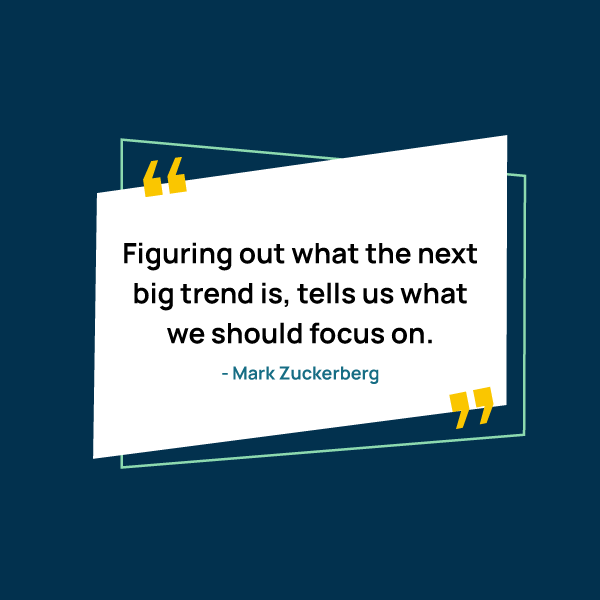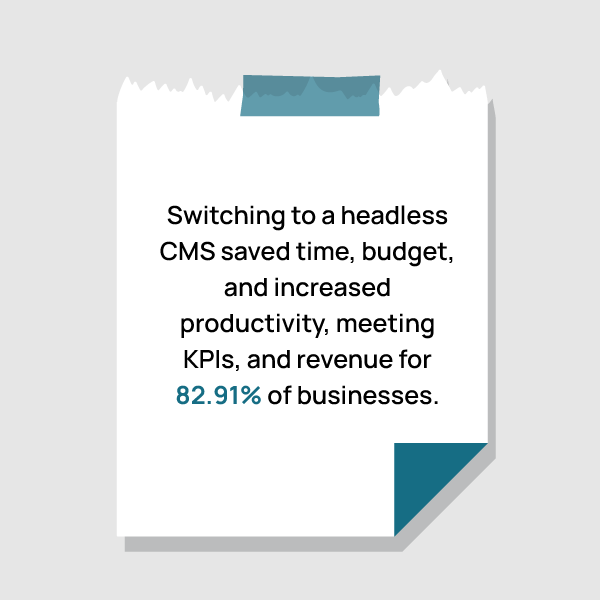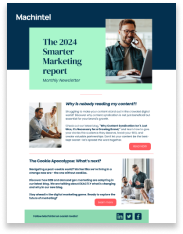Future Trends in User Experience and Headless CMS
Revolutionize digital content management by embracing seamless omnichannel experiences with UX trends in headless CMS. Uncover the strategic implementation insights in crafting engaging landscapes.
Introduction to User Experience in Headless CMS
A headless CMS represents a significant evolution in content management systems, emphasizing flexibility, scalability, and the separation of content creation from content presentation. In contrast to conventional CMSs, headless CMSs do not integrate the back-end CMS and front-end display layer. Through APIs, this architecture manages, distributes, and stores content for websites, mobile applications, IoT devices, and wearables. Within a headless content management system framework, the focus shifts towards optimizing efficiency, scalability, and customization through strategic technical decisions and architectural considerations. The headless approach separates content management from presentation, leveraging APIs for content delivery across diverse platforms.
For Content Creators and Managers
Content workflow customization allows teams to adapt their content creation and management processes to meet specific operational needs, significantly enhancing overall efficiency. The concept of Content-as-a-Service (CaaS) transforms a headless CMS into a unified content repository that can serve multiple channels. Moreover, the absence of a direct visual connection between content creation and its presentation underscores the necessity for robust preview and integration tools. Investing in or developing custom solutions that offer real-time preview capabilities is essential to bridge this gap, ensuring that content creators can visualize how their work will appear across various user interfaces.
For Developers and Designers
The headless CMS architecture champions allow developers to select the front-end technologies that best align with the project's specific requirements. This freedom encourages innovation but demands a deep understanding of different technology stacks and their implications for user experience. Furthermore, separating the front-end and back-end in a headless CMS facilitates targeted performance optimizations. However, this architectural separation introduces complexity in managing API integrations across multiple platforms.

The USA happens to have the largest market share of 21.5% in the headless CMS software market.
Top 3 considerations for elevated user experience in headless CMS
- Security and Compliance: Ensure that the headless CMS and its integrations comply with relevant data protection and privacy regulations, a critical aspect often overlooked in UX discussions.
- Future-Proofing: The flexibility of headless CMS facilitates adaptation to emerging technologies and platforms, requiring a forward-looking strategy in architecture and content strategy.
- User-Centric Design: Despite the back-end focus of headless CMS, ultimate success hinges on delivering a front-end experience that is intuitive, engaging, and meets user expectations across all platforms.
Building Seamless Omnichannel Experiences[DW1]
Consumers engage with a brand with the anticipation of a customized and efficient experience, regardless of the device or platform used. Conventional CMS systems are no longer sufficient as they naturally prioritize web-focused experiences, resulting in a lack of engagement from a diverse audience. Introducing Headless CMS, a content management solution that is API-first and platform-agnostic, explicitly designed for the omnichannel era.
Headless CMS provides exceptional flexibility due to its decoupled architecture of content presentation and storage. In order to create a seamless and device-independent user experience, developers are now free from the restrictions imposed by front-end constraints. The concept of modularity serves as the fundamental basis for establishing a cohesive story across various platforms and brand touchpoints.
However, implementing a Headless CMS is the initial step; it is the coordination of the content across many platforms that enhances the user experience. The successful integration of technology and design necessitates a strategic approach, with content strategy assuming a prominent role. Businesses can achieve a cohesive and engaging customer experience by ensuring that their content is consistent and tailored to each channel.
Enhancing Content Personalization through Headless CMS
Personalization has emerged as the distinguishing factor in the highly competitive digital industry. The presence of human touch, disguised as technology, conveys to the user that "this was specifically designed for you." Headless CMS allows for the separation of content from its presentation, granting the necessary flexibility to customize material on an unprecedented and comprehensive level.
Machine learning algorithms can analyze a wide range of data sets to customize content in real-time. For example, a user accessing a website with a high-end laptop may encounter a distinct iteration of the homepage compared to a mobile user connected to a 3G network. The level of detail in this customized content encompasses analytics-based insights, skillfully constructing a comprehensive representation of audience preferences and behavior for each contact.

Personalization can increase conversions by 30%.
Nevertheless, developers do not solely undertake personalization but necessitate the collaborative endeavors of content authors, user experience designers, and marketers. Collectively, they need to extract the data and insights provided by Headless CMS to create a user experience that connects with users and results in quantifiable interaction and conversions.
Advancements in Headless CMS
Once confined to comprehensive, all-in-one platforms, content management is currently poised for a significant paradigm shift. While APIs are critical components of a transformative era, they indicate the emergence of autonomous CMS and removing content constraints imposed by front-end design.
The Role of APIs in a Headless CMS Architecture
In headless CMS architectures, APIs serve as the foundational infrastructure, enabling seamless communication between various components. Operating within a microservices framework, APIs serve as the conduits facilitating interactions between distinct microservices responsible for different tasks such as content management, authentication, and analytics. While traditional RESTful APIs remain prevalent, GraphQL is emerging as a favored alternative due to its ability to precisely deliver requested data, reducing unnecessary data transfer. Moreover, webhooks play a crucial role in ensuring real-time content updates by instantly propagating changes across subscribed services. Additionally, advanced APIs in modern headless CMS platforms offer capabilities such as content versioning, revisions, and integration with AI-driven services for personalized content delivery.
Decoupling Content Management from Delivery
Decoupling content management from delivery represents a shift in CMS architecture, transforming the CMS into a versatile content hub serving multiple digital channels. This architectural strategy emphasizes content reusability and distribution across diverse platforms, including websites, mobile apps, AR/VR experiences, and IoT devices. Integration with content delivery networks (CDNs) becomes pivotal for global content delivery, ensuring optimal performance and low-latency access worldwide. Adopting event-driven architecture further enhances scalability and fault tolerance, leveraging messaging protocols and asynchronous communication patterns. Robust API governance frameworks are essential to ensure security and access control, while CI/CD practices streamline deployment pipelines for front-end applications, ensuring rapid iteration and seamless content updates.
Top UX Trends in Headless CMS for Better UX
Content management systems (CMSs) have been indispensable to businesses for over twenty-five years. Without requiring users to be technological specialists, they facilitate the creation, management, and modification of digital content, proving to be indispensable.

Figuring out what the next big trend is, tells us what we should focus on. - Mark Zuckerberg
Currently, the world of technology is in an ongoing process of change, and businesses must stay abreast of the most recent developments in content delivery and management. In the field of content management, these UX trends in headless CMS can shift considerably rapidly; therefore, it is critical to remain current. There are currently a few significant content management system trends that are transforming the industry.
Voice Search Optimization
There exists a subtle revolution that holds the potential to transform human engagement with information fundamentally. This revolution involves the incorporation of voice search functionality into headless content management systems. Implementing voice search in a headless CMS involves integrating advanced natural language processing (NLP) services for accurate query interpretation. Users can search for content via voice commands, leveraging conversational interfaces like chatbots or voice assistants. Structured data markup optimizes content for better visibility in voice search results.

55% of users do voice search to ask questions on a smartphone, according to Perficient.
Multimodal content delivery enhances accessibility across devices. Analytics track user interactions, guiding content optimization efforts. Security measures ensure user data protection and compliance with regulations like GDPR. Voice search lacks the advantage of the conventional keyword selection that we carefully curate for search engine optimization (SEO). However, it introduces a novel period characterized by the fluidity of content, when the significance of the environment is equally important as the information itself. As a reaction, headless CMS systems must adjust, providing developers and content administrators with increased freedom and control.
Content-as-a-Service (CaaS) Architecture
The trends in the headless CMS Software include the incorporation of content infrastructure into one's stack which represents an innovative approach to content management. The platform is primarily focused on developing various digital delivery solutions, such as applications, websites, and other similar platforms, through the utilization of content infrastructure.
The process of developing high-quality user experiences and the growth of headless CMS solutions that are compatible with various platforms may now be achieved by including content infrastructure and Content-as-a-Service (CaaS) into the developer workflow. The administrative overhead associated with content infrastructure is significantly less compared to that of a headless WordPress installation. It is evident that the same applies to a Drupal setup without a head.
Rise of Low-Code and No-Code CMS
Among the emerging content management trends in new technologies that change online experiences, the digital world is changing rapidly. The accessibility of low-code and no-code CMS platforms is undisputed. By offering user-friendly tools, more people may engage in digital initiatives without technical skills. The improved accessibility of this technology has allowed non-technical people to contribute to digital orchestration. The democratization of content production represents a monumental accomplishment.
Low-code and no-code platforms favor pre-built templates and modular designs. This may streamline the procedure but unintentionally standardize digital settings. This compromise is reasonable because standardization often improves efficiency and accessibility, ensuring a consistent user experience across platforms and devices.
Low-code and no-code CMS platforms will thrive in the headless CMS ecosystem. Both businesses and developers must acknowledge that one must find a way to combine ready-to-use production with personalized coding at the crossroads of technology accessibility and craftsmanship.
Progressive Web Apps
The popularity of progressive web applications (PWAs) has significantly increased due to their capacity to provide a cohesive user experience across various platforms. A PWA utilizes the functionalities of contemporary web browsers to connect native programs with web pages, resulting in a user experience that closely resembles an app. This includes features such as offline operation, push notifications, and responsiveness across various devices and platforms. To construct a strong PWA, it is crucial to have a dependable material management system that can effectively handle material. Integration of headless content management system systems has become increasingly popular for developing progressive web applications due to their ability to provide flexibility, scalability, and a decoupled design that aligns with contemporary development needs.
Progressive web apps can be positioned on any webpage. By integrating JavaScript-based applications with Headless CMS, enterprises may provide web front-end applications that are highly dynamic and mobile-friendly. Examples of such measures include implementing filters for product ranges that contain many product groups, as well as establishing a contemporary intranet for employees of large corporations throughout the process of digitizing internal work processes.
Strategic Planning for Headless CMS Implementation
The selection of an apt headless CMS is a nuanced process, necessitating a comprehensive evaluation of various platforms against a set of rigorously defined criteria that align with your strategic objectives. This includes but is not limited to, scalability, user-friendliness, integration capabilities, and compatibility with existing technological ecosystems. Additionally, the financial implications must be meticulously assessed, including licensing and operational costs, community support, and the availability of extensions or plugins.
For organizations transitioning from a traditional to a headless CMS, the content migration strategy is of paramount importance. This phase involves the meticulous mapping of content types and structures from the legacy system to the new paradigm, necessitating the exportation and, potentially, transformation of content to align with the novel content model.

Switching to a headless CMS saved time, budget, and increased productivity, meeting KPIs, and revenue for 82.91% of businesses.
The construction of a robust content model is foundational to the success of a headless CMS implementation. This involves the strategic definition of content types, their interrelations, and metadata schema to ensure the content architecture is flexible for future growth and scalable across the digital ecosystem. Involvement from cross-functional teams is critical, ensuring that the project addresses the multifaceted needs and concerns of all stakeholders impacted by the new CMS.
The journey concludes with a phase of rigorous testing and iterative refinement. Conduct comprehensive testing phases with real users and content to identify any areas for enhancement. Post-deployment, it's imperative to continuously monitor system performance and gather user feedback, employing an iterative approach to optimize and refine content management and delivery processes.
Final Thoughts
The exploration of headless CMS illuminates its transformative potential in content management. It offers unprecedented flexibility, scalability, and a focus on content-as-a-service (CaaS). By decoupling content management from the presentation and utilizing APIs for seamless content delivery across platforms, headless CMS heralds a new era of digital experiences. As headless CMS continues to evolve, its integration with emerging technologies like AI, machine learning, and IoT devices will further personalize and revolutionize user experiences. The future of headless CMS is about managing content along with creating dynamic, context-aware digital ecosystems that anticipate and respond to user needs.

By submitting this form I have read and acknowledged the Terms of Use and the Privacy policy
